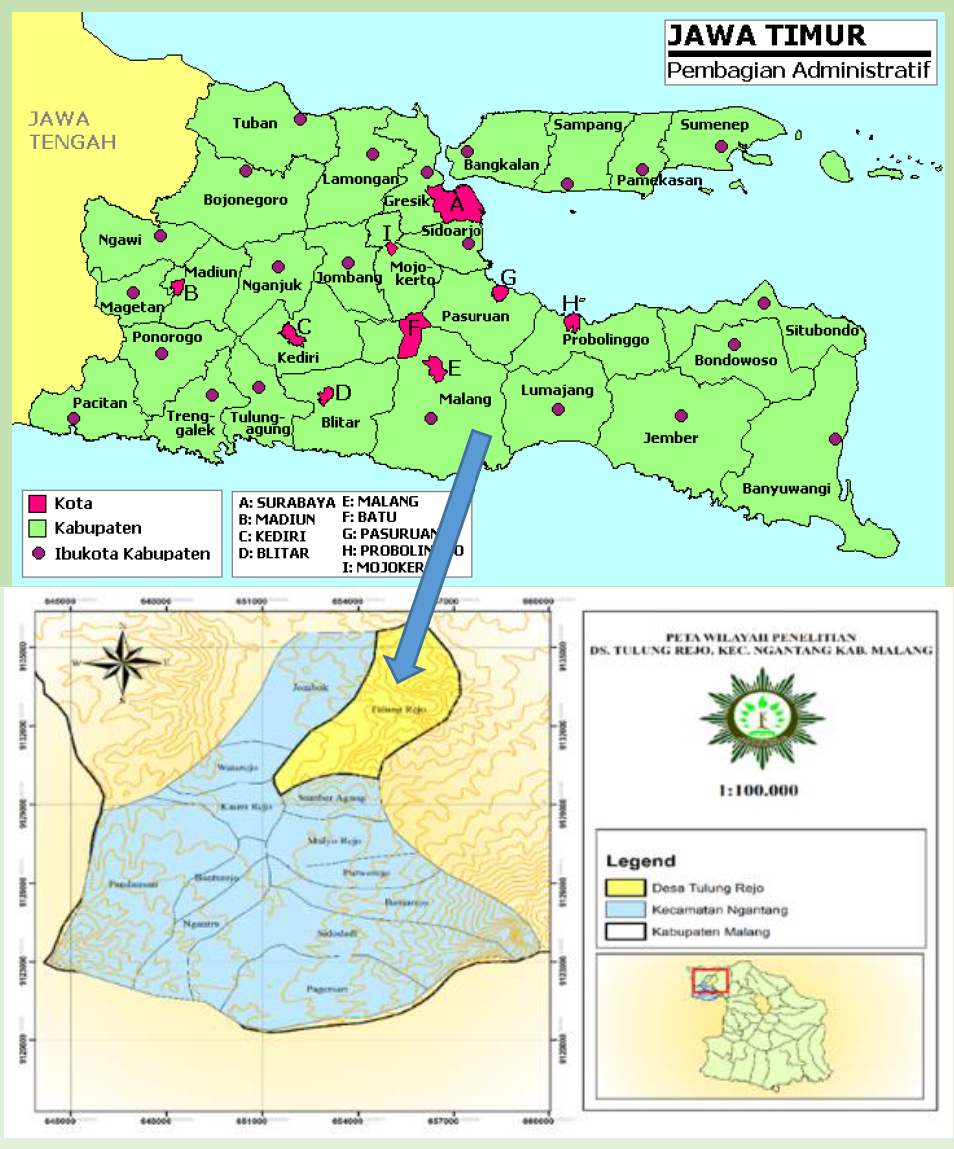Contribution of coffee agroforestry to the income of farmers in Tulungrejo Village, Ngantang District, Malang Regency

The potential for coffee development in Indonesia has great opportunities, supported by high market demand. The purpose of the study was to determine the characteristics of coffee agroforestry and its contribution to the income of farmers in Tulungrejo Village, Ngantang District, Malang Regency. Types of data consist of primary data and secondary data. Primary data were obtained from interviews with 90 respondents of coffee agroforestry farmers who are members of the Forest Farmers Village Partnership Institute (LKDPH). Data processing used quantitative descriptive analysis by calculating production costs, revenues, and income, as well as the contribution of coffee agroforestry to the total income of farmers. The results showed that farmers applied agrisilviculture with a simple system, namely planting robusta coffee (Coffea canephora) under forest tree stands. The value of the R/C ratio is 2.98 where the value is >1, meaning that coffee agroforestry farming provides benefits. The application of coffee agroforestry contributes significantly to the total income of farmers, which is 58.47%. The development of coffee agroforestry is directed at increasing productivity and quality without damaging the shade plants. The policy implications of coffee agroforestry development must involve all relevant parties including the government, entrepreneurs, farmer groups, banks, and cooperatives.
Adhya, I. Deni, D. Rusdeni, D. (2017). Kontribusi pengelolaanagroforestriterhadap pendapatan rumah tangga. Wanaraksa, 11(1), 13-20.
Amisan, R.E., Laoh, O.E.H., Kapantow, G.H.M. (2017). Analisis pendapatanusahatani kopi di Desa Purworejo Timur, Kecamatan Modayang, Kabupaten Bolaang Mongowdow Timur. Agri-SosioEkonomiUnsrat, 13(2 A), 229-236.
Awaluddin, A., Nuraeni, N., Ilsan, M. (2018). Analisis keberlanjutan usahatani kopi arabika Bawakareng Kecamatan Sinjai Barat Kabupaten Sinjai. Jurnal Agrotek,2(2).73-84.
Dermawan, S.T., Mega, I.M., Kusmiyarti, T.B. (2018). Evaluasi kesesuaian lahan untuk tanaman kopi robusta (Coffea canephora) di Desa Pajahan Kecamatan Pupuan Kabupaten Tabanan. Jurnal Agroekoteknologi Tropika,7(2), 230-241.
Kementerian Lingkungan Hidup dan Kehutanan. (2018). Peraturan Menteri Lingkungan Hidup dan Kehutanan No. 17 Tahun 2018 tentang Tata Cara Pelepasan Kawasan Hutan dan Perubahan Batas Kawasan Hutan untuk Sumber Tanah Obyek reforma Agraria. Jakarta.
Kementerian Lingkungan Hidup dan Kehutanan. (2021).Peraturan Menteri Lingkungan Hidup dan Kehutanan Nomor 8 Tahun 2021 tentang Tata Hutan dan Penyusunan Rencana Pengelolaan Hutan, serta Pemanfaatan Hutan di Hutan Lindung dan Hutan Produksi. Jakarta.
Muthmainnah, M., Sribiant, I. (2018). Pendapatan masyarakat pada komponen silvopasture dan agrisilvikultur Kecamatan Parangloe Kabupaten Gowa. Jurnal Hutan dan Masyarakat,10(1),136-144.
Mokoginta, M.M. (2016). Pengelolaan Agroforestri. Yogyakarta: Deepublish.
Olivi, R., Qurniati, R., Firdasari, F. (2015). Kontribusi agroforestri terhadap pendapatan petani di Desa Sukoharjo 1 Kecamatan Sukoharjo Kabupaten Pringsewu. Jurnal Sylva Lestari,3(2),185-194.
Prastowo, B. (2010). Budidaya dan Pasca Panen Kopi.Bogor: Pusat Penelitian dan PengembanganPerkebunan.
Pratiwi, I.A., Sunartomo, A.F, Suciati, L.P. (2018). Penerapan berbagai pola agroforestri hutan rakyat di Kabupaten Lumajang dan potensi pendapatannya. Pembangunan Pertanian dan Peran Pendidikan Tinggi Agribisnis: Peluang dan Tantangan di Era Industri 4.0. Prosiding Seminar Nasional.
Presiden Republik Indonesia. 2021. Peraturan Pemerintah No. 23 Tahun 2021 tentang Penyelenggaraan Kehutanan. Jakarta.
Slovin, M.J. (1960). Sampling.New York: Simon and Schuster Inc.
Sugiyono (2015).Metode Penelitian Kombinasi (Mix Methods). Bandung: PT. Alfabeta.
Sugiyono. (2016). Metode Penelitian Kuantitatif, Kualitatif dan R&D.Bandung: PT. Alfabet.
Syofiandi, R.Z., Hilmanto, R., Herwanti, S. (2016). Analisis pendapatan dan kesejahteraan petani agroforestri di Kelurahan Sumber Agung Kecamatan Kemiling Kota Bandar Lampung. Jurnal Sylva Lestari, 4(2),17—26.
Tumilantouw, F., Morasa, J., & Kalangi, L. (2014). Penerapan biaya relevan dalam pengambilan keputusan menerima atau menolak pesanan khusus pada CV. Pyramid. Jurnal EMBA: Jurnal Riset Ekonomi, Manajemen, Bisnis dan Akuntansi, 2(1), 677-685.
Zahro, M., Subekti, S., Widjayanthi, L. (2017). Perubahan sosial ekonomi petani agroforestri berbasis kopi di Kabupaten Jember Jawa Timur. JKMP (Jurnal Kebijakan dan Manajemen Publik), 5(2), 159-168.
Zakaria, A., Aditiawati, P., Rosmiati, M. (2017). Strategi pengembangan usaha tani arabika (kasus pada petani kopi di Desa Suntenjaya Kecamatan Lembang Kabupaten Bandung Barat, Provinsi Jawa Barat). Jurnal Sosioteknologi, 16(3), 325-339.

